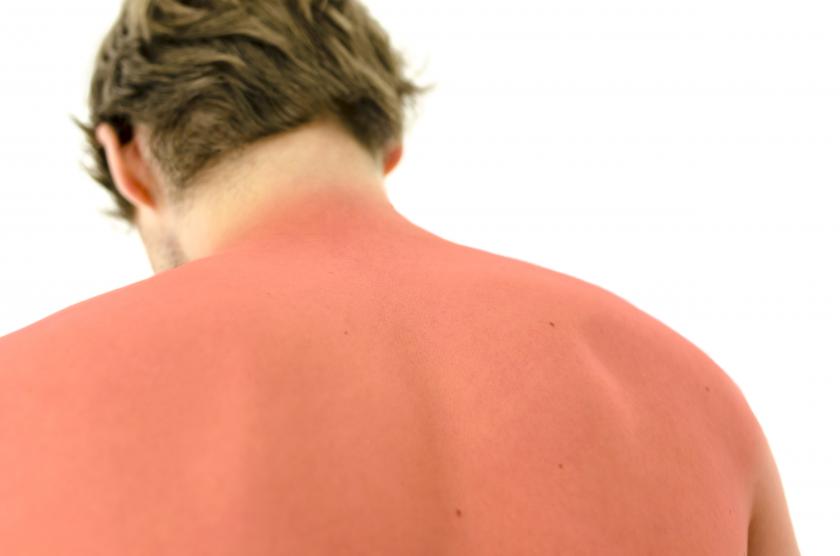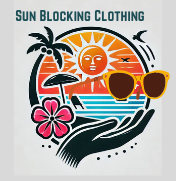
Do You Need To Avoid Too Much Sun?
Do You need to Avoid Too Much Sun? How do you know if you should be more careful? Are you safer if you have darker tone skin?
Lighter tones for your skin usually mean more sensitivity to the sun. Darker tones in your skin generally mean you won’t burn as quickly. However, you will still have skin cancer risks, even if you don’t burn easily.
First of all, each of us needs to know what our specific skin reaction to sun exposure is. Yes, generally lighter-skinned people with red and blonde hair and green or blue eyes burn quicker.
However, this isn’t to say that darker tones of skin with dark hair and eyes won’t burn. Again here is a “generally” accepted statement that darker tones don’t burn and don’t have to worry about sun protection.
It is time to do away with excuses and become aware of the characteristics and reactions of your skin. If you have children, they need help recognizing the needs of their skin.
So lighter-toned skin usually burns easier than darker tones. Teach your children the safeguards. It is common within a family to have children who have different skin tones. They all need to know that sunscreen is important for all of the family.
This Is Where Sun Blocking Clothing Helps
With sun blocking clothing, your kids are all protected, at least where the sun block clothing is. A good sun hat, sunshades, and sun block shirt leave a lot less skin to cover with sunscreen.
A long sleeve shirt does wonders here. While a short sleeve surely protects the shoulders, back, and chest, a long sleeve adds the arms. This is so important for those with lighter skin tones. Loose-fitting clothing that allows a little airflow feels more comfortable to me.
With my sun block shirt on, hat, and sunglasses, I only need to add sunscreen to my face and hands. That is so much easier to manage and reapply as needed than all over sunscreen protection.
Darker Tones Or Tan Already?
Do you know what color skin tones you have? Think about how long it takes you to tan. Fair skin people will turn red in 20 to 30 minutes. Mid-tone skin will take a little longer, but not a lot to start the flushed stage in skin color. Very deep brown tones will allow you to be out in the sun longer before burning.
The danger for these different levels of skin tones is that the darker tones will be to the dangerous stage and not look too bad. If your skin is sensitive to the touch, you have had too much sun.
Adding sun blocking clothing to your sun protection for your skin will allow you to be out in the direct sun longer and stay safe. This is true for all skin tones.
No skin tone, no matter how dark will not eventually have skin damage from too much sun.
Basics For Skin Safety In The Sun
- Know how Your Skin Reacts to Sun Exposure.
When you’re out in the sun, does your skin tan easily? Do you rarely sunburn? Examining the way your skin reacts to the sun’s rays can help you determine how much protection your skin tone needs - . Those who tan easily have a medium or dark skin tone, while those who burn easily likely have a very fair skin tone.
When you have very light skin, sunburn is easy to detect. The skin may appear flushed, red, and inflamed.
In darker skin, however, it is harder to notice the subtle redness or pinkness it causes. That is why sunburn is so dangerous for those who have medium and darker tones on their skin.

Sunburn Care Suggestions
Regardless of how dark or how light your skin tones are your skin will react when it gets too much sun. Your skin will feel one or all of these reactions to overexposure:
- hot to the touch as well as how it feels to you on the inside
- contact with anything makes you know how sensitive to the touch your skin is when overexposed
- painful meaning that it just hurts and will need some soothing skin healing cream. Make sure that you avoid any product with vaseline in it. Aloe products are usually soothing and healing.
- painful irritation that will probably itch. Be careful of your new sunburn. Give it time to heal before wearing clothing that will rub or bind.
- itchy is just plain hard to ignore. You will need something cool on your skin. Avoid rubbing or scratching your skin.
As your sunburn heals, your skin may peel away in the affected area. It is important to take care of the skin as it heals. I think that we have caused more issues for ourselves by trying to pull the dead skin away. Yes, that burned skin will come off but, be very cautious not to rush this stage of the healing.
Cover the skin with lightweight clothing for protection.
After Sunburn Skin Care
Your sunburn itself should clear up on its own in a matter of days. However, when darker tone skin gets a sunburn, it may sneak up on you. A bit more difficult to see on darker tone skin, you may get a deeper burn than you realize.
In darker skin, it can be difficult to be aware of serious cases of sunburn that can lead to a heat stroke. Anyone who has spent a lot of time in the sun should seek medical attention immediately if they notice these serious symptoms:
- headaches
- dizziness or nausea
- blistering or visually swollen skin
- a very high temperature (101 or more )
- shivering or chills
- muscle cramps
Remember to watch for your safety, as well as the safety of your family. Often the symptoms are apparent, but not so obvious to someone who doesn’t know what to watch for in people who have sunburn.
Treatment
In most cases of minor sunburn, your body will heal by itself. Protecting your healing skin during this time is very important for you to heal to overall healthy skin. Aloe vera-based ointments and sprays can help in this process.
Remember to avoid heavy creams like vaseline. The very thing that makes vaseline a good skin treatment most of the time is not what is needed for burns.
Covering burns of any kind with heavy oil-based ointments can produce a deeper burn. Your skin needs to be able to release the heat. A heavy ointment can create conditions to hold the heat in and result in more burn.
Prevent More Overexposure
Get out of the sun and into the shade or into the house to avoid additional sun exposure. Allow your skin to cool and body core temperature to return to more normal. Also, make sure to hydrate to help lessen the damage of your sun overexposure.
Other ways to help keep your skin safe in the sun:
- Wearing a wide-brimmed hat to protect your face, ear, nose, and neck.
- A Sun Block Shirt that will protect your upper body, shoulders, and arms will help prevent sunburn. The shirt should be a loose fit to allow for some air circulation.
- Applying a sunscreen containing zinc oxide and titanium dioxide will help protect your skin whenever you are outside. Reapply often.
- Spending some outside time in the shade, whenever possible will lessen the dangers of the sun. Break up those long times in the sun with ‘shade break.’
- Make sure to hydrate. Most sunburn is accompanied by dangerous conditions of dehydration.
- Cool wet towels on your skin will help your sunburn, and help keep your body temperature cooler.
Sun Protection
Protection from the sun for your skin is important for everyone. Often those who are slower to start turning red think they don’t have to be careful.
This is one of the reasons people with darker skin are surprised by skin cancer. You may have darker tone skin, however, the melanin in your skin may not protect you from all potential damage from UV rays.
A layer of sunscreen with a sun protection factor of 30 or higher may help protect your skin from the damaging effects of the sun. Sunburn is not the only danger from the sun. Don’t forget about the aging effects of too much sun.
Which Sunscreens Do The FDA Recommend?
The Food and Drug Administration (FDA is currently recommending physical (natural or mineral) sunscreen options. These products contain zinc oxide and titanium dioxide. The FDA states that as of right now these are the safest and most effective means of protection.
These mineral kinds of sunscreen can leave a white hue on the skin. Needless to say, this made the chemical sunscreens less appealing to those with darker skin tones.
To get a formula that doesn’t show so much on any skin, manufacturers are finding improvements. The production of increasingly micronized forms of the minerals in the formula allows the protection of these sunscreens with less white on the surface of the skin.
The smaller grains of the mineral-based sunscreens are easier to apply and blend to the skin’s natural tones. This will help them become more cosmetically appealing to everyone, even those with darker tones on their skin.
A few other suggestions for optimum sun protection include:
- limiting the amount of time spent in direct sunlight
- Avoid peak sun hours from 10 AM – 4 PM.
- staying in the shade a part of the time on very sunny days, breaking up long sessions in the sun
- wear your sunglasses to protect the delicate skin around the eyes (wrap-a-round or styles with oversized lens protect best)
- wearing a wide-brimmed hat and sun-blocking clothing to protect any exposed skin on the face, neck, and shoulders
- drinking lots of water and nonalcoholic beverages, and stay hydrated
Following these suggestions can help your skin and your family’s skin stay safe from too much sun. You can’t remember all of them? Pick out one or two and work with helping your family learn to stay safe in the sun.
You get your most protection from sun blocking clothing. Put it on and wear it! Simple as that.
Darker Tone Skin And Skin Cancer
Regular checks for skin cancer are important for all people, regardless of skin color. Make it a habit to check out moles, warts, and any unusual growth or spot on your skin. Changes mean a doctor visit for a check-up.
Similar to sunburn, people with very dark skin are less likely to experience skin cancer. However, these same darker skin tones do get cancer on occasion.
When I read the review study from 2016Trusted Source it wasn’t a surprise. It just seems reasonable that people of color are less likely to become afflicted with skin cancer. However, it was a surprise that they are much more likely to die from it due to delays in detection and medical care.
This may be because, in the past, doctors usually diagnose skin cancer in people with dark skin at a later stage. This was related to several issues, including a lack of awareness about the risks and symptoms, as well as possible medical bias. Then of course there are socioeconomic factors that may also play into these risks.
Regular checkups with a doctor or dermatologist are important for everyone.

Sami’s Take on Who Needs To Avoid Too Much Sun?
Having darker skin tones does protect from some forms of sun damage due to increased melanin in the skin. That said, people with dark skin do experience sunburn. Often the signs of skin cancer are not as easy to see because their skin is darker.
Melanin will not protect against all forms of damage. UV rays may still damage the skin cells and put people at risk of skin cancer. Melanoma is triggered by the sun hitting the skin.
If your system happens to be in the right condition to start growing a melanoma you may notice it as quickly as someone with really fair tone skin. Yes, that sounds like it is kind of iffy about melanoma, but that is exactly the problem. There is no clear-cut reason other than sun exposure why some get melanoma and some don’t. Darker tones of skin are not exempt. You may develop melanoma too.
For this reason, doctors encourage people of all skin tones to use sun protection to prevent skin damage. Sun blocking clothing is a giant step in that protection.
